Chapel 3
The dome of this chapel is made of ten sections which are formed with segments of Tetrahedric curves. The dome rests on ten columns formed by pentagonal prisms. These columns are separated by squares. So, the plan of the support structure is a regular 20-agon.
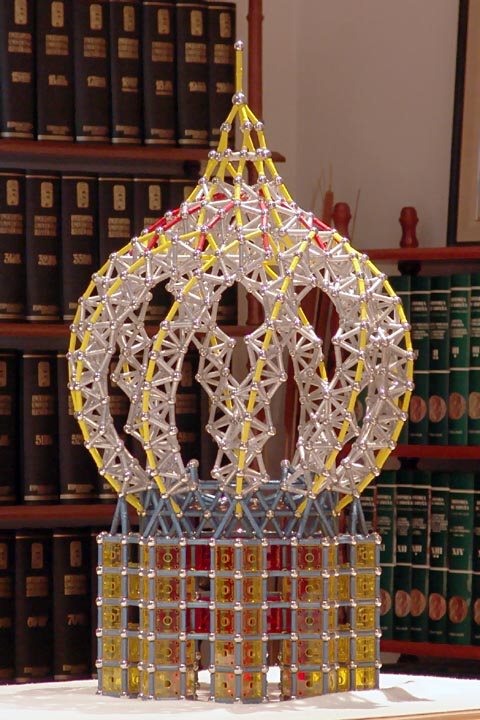
Chapel 3, side view
3305 pieces: 787 balls, 2147 rods, 61 pentagons, 310 squares (17.61 kg)
|
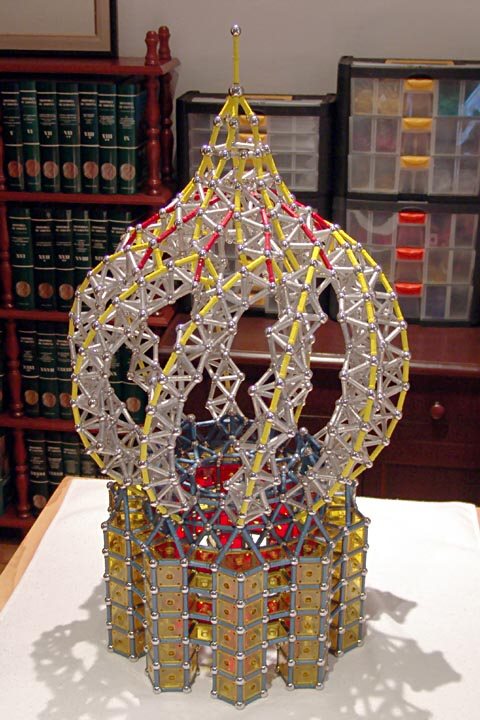
Chapel 3, top oblique view
|
Notice that, for once, a non-standard ball has been used at the top of the dome. Because of its bigger diameter, the five rods joining at it can form a more acute angle.
On top of the 20-agon formed by the columns, two 20-sided antiprism has been added. The dome sections start on ten side triangles of the upper antiprism. On the inner face of these triangles, ten tetrahedra are built; from their free vertices, ten nearly horizontal triangles join to make up a regular decagon, which will serve as a reinforcement structure. Last, ten additional pointing-up tetrahedra are built on the upper faces of the previous ones. Auxiliary scaffolding, shown below, will rests on these latter tetrahedra. All of this is shown (more or less) in the following picture:
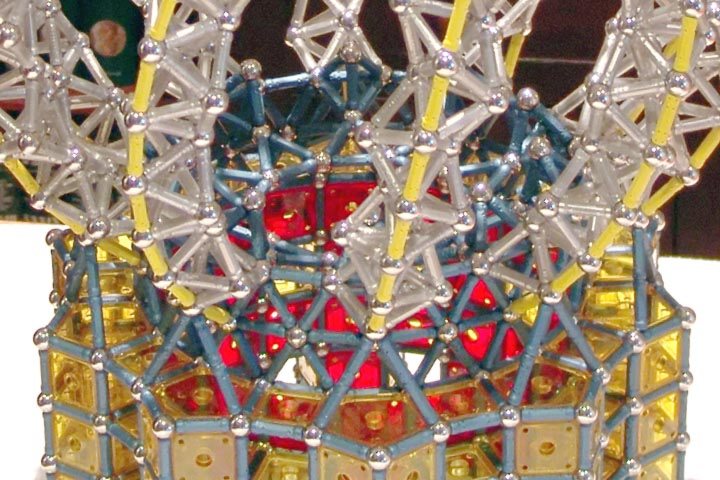
Chapel 3, building the dome, 1
|
The following sketch should help to clarify. The balls labelled A are the upper vertices of the 20-side antiprism. The balls labelled B are the vertices of the first ten tetrahedra, being at a lower height than the A's. The triangles CBC are not exactly horizontal, so the balls labelled C are at a different height, which could be lower or higher, than the B's. The latter ten tetrahedra, not drawn, are built on the faces ABA of the first ten.
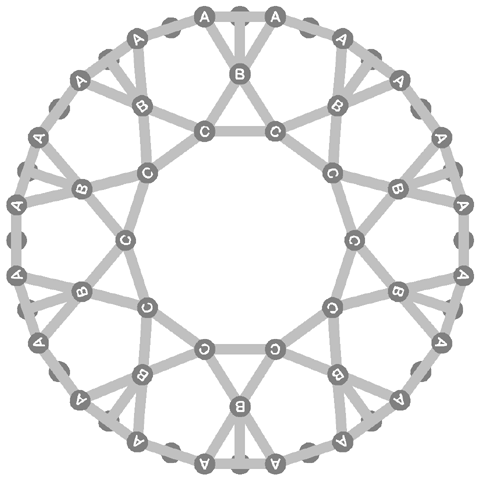
Chapel 3, sketch of base reinforcement
|
As the sections of the dome grow, but still don't join, some auxiliary scaffolding is required. In this case, it is made of 220 blue rods (which must be added to the count of required rods given above):
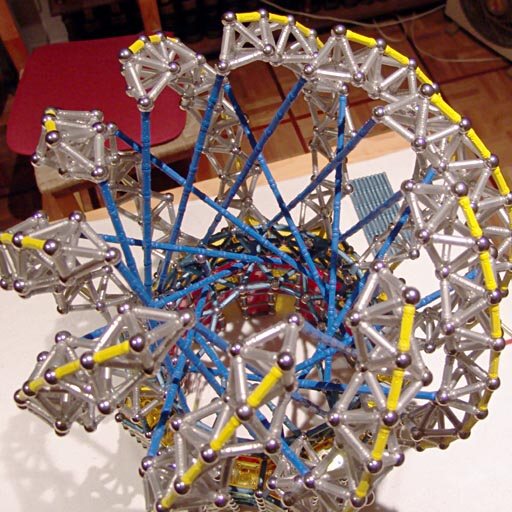
Chapel 3, building the dome, 2
|
The first segment of each section is a circular tetrahedric curve made of 32 tetrahedra. When all ten are finished, each segment can join its right-hand adjacent one with two rods, as shown in the following picture:
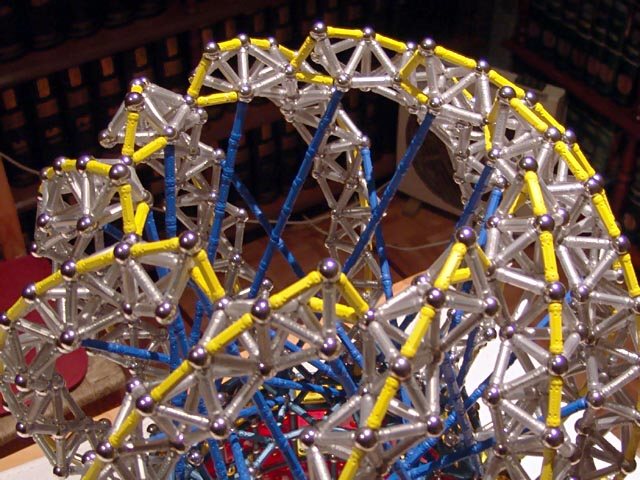
Chapel 3, building the dome, 3
|
From the end of each circular segment, a helical tetrahedric curve segment goes to the top of the dome. These segments are made of six tetrahedra, and two more steps in which we add just a ball and two rods, instead of full tetrahedra. Also, notice that the lowest placed red rod in each segment was already present in the previous picture, although it was silver-colored there:
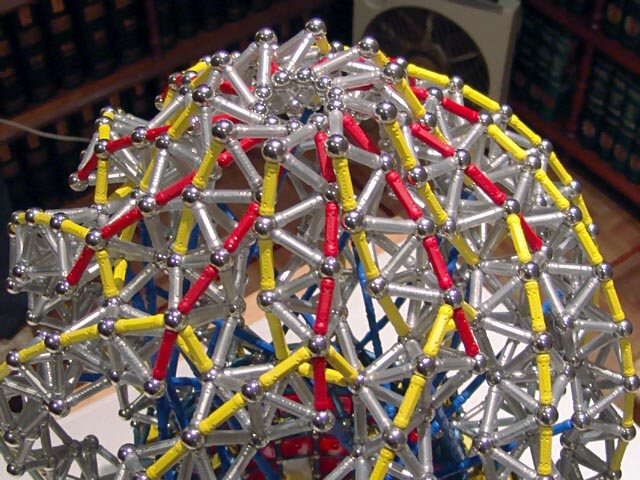
Chapel 3, building the dome, 4
|
- A variation with an untwisted dome.
- The construction of Chapel 4, with a twelve-section, bigger dome, is very similar.